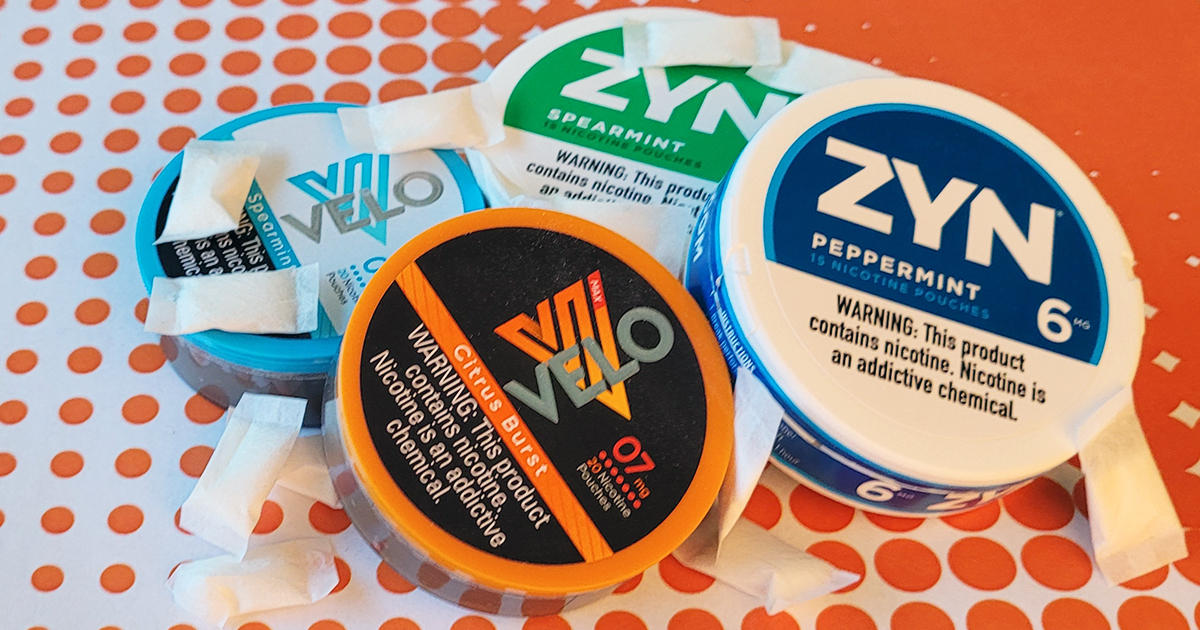How popular are oral nicotine pouches and lozenges?
In the face of declining cigarette sales and expanding restrictions on flavored e-cigarettes, some tobacco companies are rapidly expanding their oral nicotine product offerings with recreational products such as nicotine pouches, gum, tablets, lozenges, gummies, and more.
Sales of oral nicotine products more than doubled between 2020 and 2022, according to a recent Federal Trade Commission report. The FTC report found that tobacco manufacturers sold $1.06 billion of synthetic nicotine lozenges, pouches, and other oral nicotine products in 2022, more than double the $452.8 million sold in 2020.
Oral nicotine products contain nicotine that is absorbed into the bloodstream through membranes in the mouth, similar to smokeless tobacco products like dip, chew, or snus. However, unlike smokeless products, oral nicotine products do not contain tobacco leaf, but instead contain nicotine that is derived from tobacco in a lab or manufactured synthetically. Synthetic nicotine is relatively new and increasingly popular and is regulated by the FDA as of March 2022. Because oral nicotine products do not contain tobacco leaf, the FDA does not categorize them as smokeless tobacco products and they are not regulated as tightly. Many oral nicotine products also contain flavors that have been shown to appeal to young people such as mint, fruit, and cinnamon, according to brand websites.

Previous data indicate that oral nicotine pouches are driving much of the increase in oral nicotine product sales. Sales of nicotine pouches have increased more than 300-fold since they entered the market in 2016, with sales rising from $710k in 2016 to $216 million by June 2020, according to a 2021 letter published in JAMA.
Many of these sales can be attributed to an oral nicotine pouch brand called Zyn: research published in Substance Use and Addiction found that Zyn led the overall unit share among brands in the United States from 2019 to 2022, a time when unit sales of oral nicotine pouches increased more than six-fold from 126.06 million units from August to December 2019 to 808.14 million units from January to March 2022.
Additional data are needed to track the sale and consumption of recreational oral nicotine products. As more information emerges, here are some things to keep in mind about oral nicotine products.
Flavored tobacco restrictions are gaining momentum, but don’t cover oral nicotine products
As flavored tobacco restrictions gain momentum, there is a concern that young people will switch to flavored oral nicotine products for continued access to the flavors they want.
Flavored tobacco restrictions are expanding, with 385 jurisdictions and three Native American tribes in the United States currently placing some type of restriction on flavored tobacco product sales, according to Truth Initiative’s flavored tobacco policy report. Progress is also being made at the federal level to eliminate menthol from cigarettes and all flavored cigars, with the FDA sending final rules to the White House Office of Management and Budget for review in October 2023.
With restrictions on flavored tobacco products expanding, the tobacco industry is releasing new types of flavored products that circumvent proposed or existing restrictions focused on combustible products and e-cigarettes.
Truth Initiative strongly urges the FDA to remove all unauthorized oral nicotine products from the market, and to accelerate their work to eliminate all flavors from tobacco products. To help prevent young people from starting to use these products, restrictions that curb exposure to the marketing of these products should also be implemented.
In November 2023, the FDA issued a warning to Nic Nac Naturals, LLC for the marketing of their unauthorized dissolvable nicotine products, which the company describes as “nicotine mints” and resemble a pack of mints. The FDA must take additional actions like these to prevent future violations and keep these unapproved products off the market.
Oral nicotine products are not the same as FDA-approved nicotine replacement therapy
Some oral nicotine products, especially gum, lozenges, mints, and tablets, appear similar to some forms of nicotine replacement therapy (NRT). However, they are not the same. The goal of NRT is to help tobacco users quit nicotine products for good. Oral nicotine products produced by tobacco companies are a recreational kind of nicotine designed for continued use.
There are seven forms of FDA-approved NRT: the nicotine patch, gum, inhaler, lozenge, nasal spray, and two non-NRT quitting medications. Some of these are available over the counter at pharmacies, while others require a prescription. These products are regulated by the FDA and contain a small dose of nicotine that allows users to phase out their nicotine dependence over time. Decades of research, as well as a 2020 Surgeon General Report, confirms that NRT is safe to use (even long-term) and is an effective way to quit tobacco products for good.
Oral nicotine products, on the other hand, can be purchased at tobacco retail stores, are not tightly regulated, and are not approved for use as quitting medications. In addition, some forms of oral nicotine products can contain high levels of nicotine, which is addictive and harmful to developing brains.
Many oral nicotine products advertise with “tobacco-free” claims that may be misleading
Oral nicotine products, especially popular oral pouch products from brands like Zyn, are frequently marketed as “tobacco-free” alternatives to smoking because they contain nicotine and not actual tobacco leaf. These “tobacco-free” claims may lead customers to ascribe lower risk to oral nicotine products despite a lack of evidence or proper federal authorization.
These claims have the potential to influence consumer behavior: for e-cigarettes, “tobacco-free” claims were shown to increase purchase intentions among teens, a trend that may extend to oral nicotine products.
A Truth Initiative study published in Tobacco Control found that a majority of mailed ads for oral nicotine pouches or lozenges claimed that they did not contain tobacco leaf (55%) and that they were an alternative to other tobacco products (69%). Most advertisements (84%) also featured claims that the product could be used anywhere. Popular pouch brands Zyn, On!, and Velo spent nearly $25 million between January 2019 and September 2021 on advertising.
While the FDA places some regulations on the marketing of these products – such as requirements for nicotine warning labels – additional monitoring of nicotine product marketing, sales, and consumer patterns is needed to inform future regulation.
More in tobacco industry marketing
Want support quitting? Join EX Program
By clicking JOIN, you agree to the Terms, Text Message Terms and Privacy Policy.
Msg&Data rates may apply; msgs are automated.


